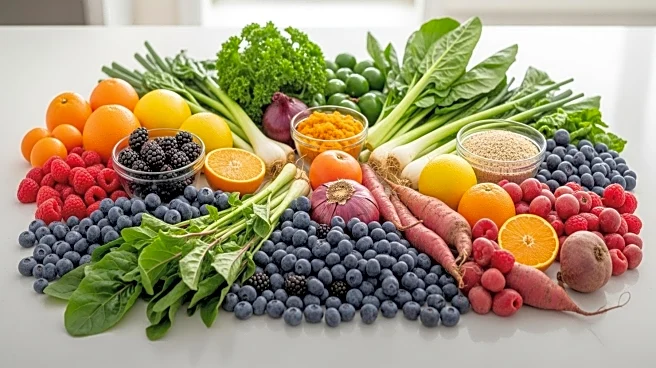What is the story about?
What's Happening?
The global dietary fibres market is experiencing significant growth, with projections indicating it will reach nearly $15 billion by 2030. This expansion is driven by increasing consumer interest in fibre-rich foods due to their health benefits, including improved digestive health, lowered cholesterol, and reduced risk of chronic diseases. The Asia Pacific region leads the market with a 40% share, followed by North America and Europe. Fibre is being incorporated into various food sectors, including beverages, bakery, dairy, and snacks, reflecting a shift towards wellness-focused products. Functional fibres like inulin and polydextrose are particularly popular for their prebiotic properties and ability to moderate blood glucose levels.
Why It's Important?
The growing demand for fibre-rich foods highlights a broader consumer trend towards health and wellness. As consumers become more aware of the benefits of dietary fibre, industries are responding by fortifying products with fibre-rich ingredients. This trend not only supports digestive health but also aligns with the increasing preference for clean-label and natural products. The expansion of the fibre market presents opportunities for food manufacturers to innovate and meet evolving consumer expectations, potentially leading to increased market share and profitability.
What's Next?
As the fibre trend continues to gain momentum, food manufacturers are likely to increase their focus on developing new fibre-enriched products. This could lead to more diverse offerings in the functional food sector, including innovative formulations that combine taste and health benefits. Additionally, the growing interest in fibre may drive further research into its health impacts, potentially uncovering new applications and benefits. Stakeholders in the food industry, including retailers and marketers, will need to adapt to these changes to capitalize on the growing consumer demand for fibre-rich products.
Beyond the Headlines
The rise of fibre as a key nutritional component may have long-term implications for public health, potentially reducing the prevalence of chronic diseases associated with poor dietary habits. Moreover, the trend towards fibre-rich foods reflects a cultural shift towards proactive health management, where consumers are increasingly taking control of their dietary choices to improve overall well-being. This shift could influence future food policies and regulations, encouraging the promotion of fibre as a vital component of a balanced diet.
AI Generated Content
Do you find this article useful?













